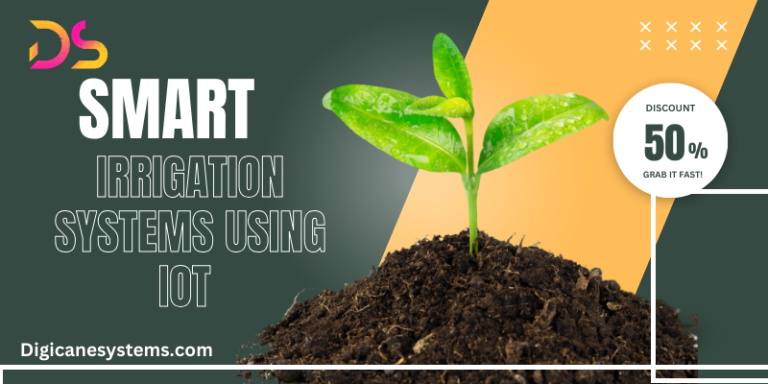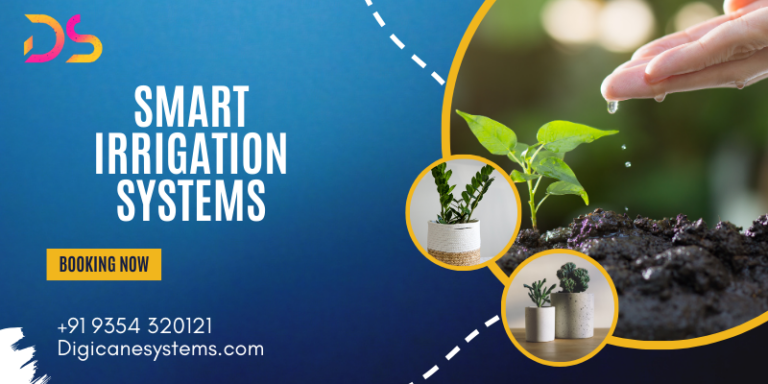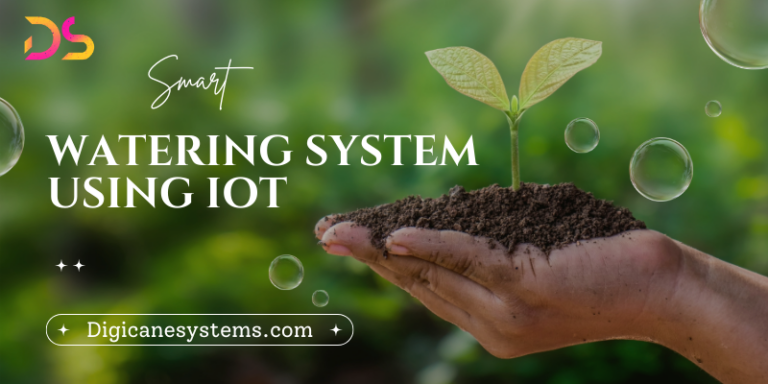Installing a Smart Irrigation System Using IoT
Step-by-Step Guide to Installing a Smart Irrigation System
A well-designed and properly installed irrigation system is the key to making this dream a reality. Here we present a detailed step-by-step guide that takes the mystery out of installing a smart irrigation system, allowing you to effortlessly bring your garden to life. Have you ever dreamed of a lush, vibrant garden that thrives without the need for constant hand watering? Imagine a space where flowers bloom, lawns flourish, and the need to drag hoses is a thing of the past. A well-designed and properly installed irrigation system is the key to making this dream a reality. Here we present you with a detailed step-by-step guide that takes the mystery out of installing a smart irrigation system, allowing you to bring your garden to life with little effort.
Guide to Installing the Best Irrigation System for You
Step 1: Plan for Success
Before you dive into the world of a Smart Watering System, it’s important to lay a solid foundation through thoughtful planning. Assess your garden layout, taking into account the type of plants, their water requirements, and the layout of the site. Mark out areas to ensure complete coverage, taking into account any obstacles such as trees, paths, or structures. Understanding the unique characteristics of your garden is essential to choosing the system that best suits your needs.

Step 2: Gather Tools and Supplies
Armed with a well-thought-out plan, the next step is to gather the tools and supplies you need. In addition to irrigation system components such as pipes, valves, and sprinkler heads, you’ll need trenching tools, a PVC cutter, pipe glue, Teflon tape, and various fittings. Investing in an automatic timer or watering controller is also a smart idea to ensure consistent and effective planning.
Step 3: Design the System
Designing an IoT based Smart irrigation system involves converting your garden plan into installation plans. This process includes choosing the type of sprinkler that is best suited to each zone, calculating water pressure, and understanding the size of the pipes needed to optimally distribute water. An efficient system design ensures even water coverage and minimizes water loss.
Step 4: Excavation and Pipework
Once your plan and materials are ready, it’s time to start digging the trenches for the pipes. The trenches need to be deep enough to accommodate the pipes without interfering with foot traffic or other construction work. Accuracy is key when laying and connecting the pipes to separate zones.
Step 5: Install Control Valves and Sprinklers
The heart of any IoT based Smart Watering system is the control valves and sprinklers. Carefully install these components according to the design plan, connecting the control valves to the main water supply. When installing sprinklers, check their position to ensure optimal coverage and adjust them as needed.
Step 6: Build and Test the System
Once the physical installation is complete, it’s time to assemble the various parts of the system. Double-check all connections to ensure they are secure and leak-free. Next, turn on the water supply to the system and test each zone, observing the operation and coverage of the sprinkler. This step is critical to identifying and fixing problems before final implementation.
Step 7: Program the Controller
Modern smart irrigation system often come with programmable controllers that allow you to accurately schedule watering and save water. Program the controller to suit the specific needs of your garden, taking into account factors such as plant type, weather conditions, and seasonal changes. A properly configured controller will ensure that your garden receives the right amount of water at the right time, promoting healthy growth and saving resources.
Step 8: Regular Maintenance and Inspections
The installation may be complete, but the path to a lush garden continues with regular maintenance. Check the system periodically for leaks, adjust sprinkler heads, and make sure your timer or controller is working optimally. Additionally, winterizing the system in cold climates is critical to preventing freeze damage.
Basic Tips for Maintaining Your Irrigation System
A well-installed irrigation system can be your garden’s best friend, turning manual watering into an automated and efficient process. However, regular maintenance is essential to ensure the system is working optimally and your garden is thriving. Here are some important tips to keep your irrigation system in good condition:
Regular Inspections
Frequent inspections are essential to properly maintaining your irrigation system. Check for leaks, clogs, or damaged components. Look for puddles or dry spots that may indicate problems with water distribution. Addressing these issues promptly ensures efficient use of water and prevents potential damage to the landscape.
Adjust Sprinkler Heads
Your garden is a dynamic space; plants grow and change over time. Adjust the direction and speed of your spray to accommodate this growth. Make sure they cover the designated areas and do not water sidewalks, driveways, or other bare areas. Properly adjusted heads will not only keep your garden healthy, but they will also prevent water loss.
Cleaning and Cleaning
Clean and air out sprinkler heads and filters regularly. Debris can build up, causing clogs that restrict water flow or cause uneven distribution. Use a soft brush or compressed air to remove dirt and particles that may interfere with the sprinkler. This simple step can greatly improve the efficiency of your system.
Calibrate the Controller
Your controller or timer is the brains of your system. Make sure it is programmed correctly to water your garden. Make adjustments as the weather, season, or plant needs change. Consider purchasing a smart controller that adjusts your watering schedule based on weather forecasts for optimal efficiency.
Winterization
Before the cold weather sets in, it is important to winterize your system. Drain excess water from pipes to prevent freezing and possible damage. Consider calling a winterization professional, especially in areas with harsh winters, to protect your system and avoid costly repairs in the spring.
Professional Maintenance
Please contact a professional service center periodically for a thorough maintenance service. A certified technician can perform a complete inspection to ensure that all components are in perfect condition. They can detect and fix potential problems that may have escaped your attention, extending the life of your system and preventing more serious problems in the future.
Conclusion
With a smart irrigation system using IoT installed, you can enjoy the transformation of your garden. The once arduous task of watering plants becomes automated and efficient, allowing you to relax and enjoy the beauty unfolding before your eyes. The step-by-step guide we followed together paves the way to a thriving garden, reflecting the care and attention given to its design and installation.







